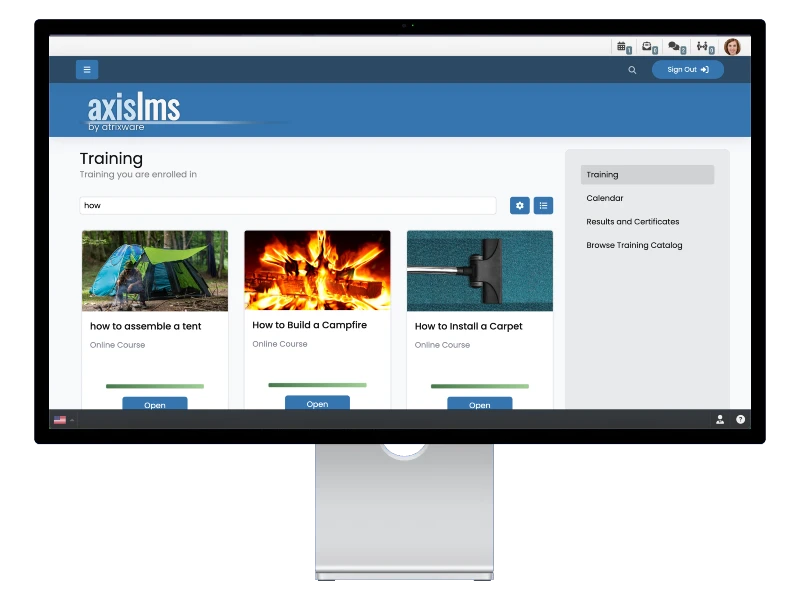Blended learning for small business training is transforming how companies build workforce capabilities, combining the best of traditional in-person training with the scalability and flexibility of digital platforms. For small businesses facing budget constraints, diverse roles, and rapid growth needs, a well-structured blended learning program can enhance employee performance, engagement, and long-term retention.
This comprehensive guide explores the components, benefits, implementation strategies, and key considerations for small businesses ready to optimize their training programs.
What is Blended Learning?
Blended learning, often referred to as hybrid learning, is a modern training approach that thoughtfully combines the strengths of online digital media with the benefits of traditional face-to-face instruction. Rather than choosing between virtual or in-person training, blended learning leverages both formats to create a more engaging, flexible, and effective learning experience.

This dual-modality approach empowers employees by giving them more control over their learning journey, allowing them to learn at their own pace, choose their preferred path, and access content from any place.
In a business training environment, blended learning typically includes a strategic mix of the following components:
- Live in-person workshops or instructor-led training (ILT) sessions for skill-building and real-time engagement
- E-learning modules hosted on a Learning Management System (LMS) for scalable, asynchronous training delivery
- Peer learning opportunities through discussion boards, group projects, or mentorship
- Webinars and video conferencing for virtual classroom experiences and subject matter expert sessions
- On-the-job training assignments that allow employees to immediately apply newly acquired skills in real-world scenarios
For small businesses, where training budgets and staff availability can be limited, this model offers a cost-effective and scalable way to upskill teams.
Why Blended Learning Works for Small Businesses
Small businesses operate in fast-moving environments where employees often juggle multiple responsibilities. This makes it hard to rely solely on traditional classroom training. Blended learning addresses several critical challenges faced by small businesses:
- Flexibility: Employees can access training at their convenience, minimizing downtime.
- Scalability: Digital content can be reused, reducing the need for repetitive instruction.
- Cost-Effectiveness: Reduces travel, venue, and instructor costs.
- Personalization: Adaptive learning paths can cater to individual skill gaps.
- Higher Engagement: A mix of formats keeps learners interested and increases retention.
By offering both structure and flexibility, blended learning helps small businesses develop a resilient and agile workforce.
Components of a Successful Blended Learning Strategy
To build an effective blended learning model, small businesses should integrate several core components:
1. Learning Management System (LMS)
An LMS is the digital foundation of any blended learning strategy. It serves as a centralized platform where all training content is stored, delivered, tracked, and assessed. For small businesses, choosing the right LMS for small companies is especially important, as it must strike a balance between affordability and functionality. A user-friendly, scalable LMS allows for consistent training across departments, enables progress tracking, and offers features such as assessments, certificates, and automated reminders.
2. In-Person or Live Virtual Sessions
Despite the rise of digital learning tools, real-time interaction remains an essential component of effective employee training. In-person workshops or virtual instructor-led training (VILT) sessions foster engagement, build rapport, and allow learners to ask questions and receive immediate feedback. These sessions are particularly valuable for soft skills development, leadership training, and onboarding programs, where dialogue and real-time scenarios enhance learning outcomes.

3. Self-Paced Learning Modules
Self-paced learning gives employees the freedom to complete training based on their own schedules and preferences, making it ideal for small business teams with varying workloads. These modules can include videos, reading materials, quizzes, simulations, and other multimedia resources designed to make learning engaging and digestible. By allowing learners to revisit concepts and move at their own pace, this approach supports deeper understanding and long-term retention.
4. Collaborative Learning Opportunities
Collaborative learning transforms training from a solitary task into a social experience. Encouraging employees to work together on projects, participate in peer reviews, or engage in group discussions deepens learning and promotes critical soft skills like teamwork, communication, and problem-solving. For small businesses, this can take many forms, including discussion boards within the LMS, cross-functional group assignments, and informal mentorship programs.
5. On-the-Job Applications
Blended learning is most effective when it bridges the gap between theory and real-world application. On-the-job training ensures that employees can immediately apply what they’ve learned to practical, job-related tasks. This might involve assigning projects aligned with newly acquired skills, creating structured observation opportunities, or using job aids and checklists to reinforce proper techniques. Encouraging employees to reflect on their learning and document real-world results further cements their understanding.
Building a Blended Learning Program: Step-by-Step
Step 1: Identify Business and Learning Goals
The first and most critical step is to define the purpose of your training program. Start by asking: What specific business outcome do we want to achieve through this training? Are you onboarding new employees? Developing future leaders? Ensuring compliance with industry regulations? Improving customer service? Clearly outlining your business and learning goals will help shape the structure, content, and delivery of your blended program.
Step 2: Assess Employee Needs and Preferences
After defining your goals, shift the focus to your learners. Understanding their current skills, learning styles, challenges, and preferences is essential to building an effective training experience. Conduct surveys, interviews, or focus groups to gather data on how your employees prefer to learn, whether it’s through visual content, hands-on activities, or interactive discussions. Also, identify existing skill gaps and pain points.
Step 3: Choose the Right LMS
The Learning Management System (LMS) is the engine that powers your digital training. For small businesses, selecting the right corporate LMS system can have a significant impact on adoption and outcomes. Look for a platform that offers mobile access, user-friendly dashboards, integration capabilities with HR or payroll systems, content creation tools, and built-in analytics. The LMS should be flexible enough to grow with your business and simple enough that your team can use it without constant IT support.

Step 4: Develop or Curate Training Content
Once your platform is in place, focus on content creation. Training materials can be developed internally, sourced from trusted providers, or a combination of both. The key is to ensure that the content is aligned with your goals and tailored to your employees’ needs. Incorporate a variety of formats, such as videos, slide decks, infographics, podcasts, microlearning units, and real-life case studies, to keep learners engaged and support different learning styles.
Step 5: Plan the Blended Learning Structure
With goals, audience insights, tools, and content in hand, it’s time to design the actual learning journey. This involves strategically sequencing live sessions, self-paced modules, collaborative activities, and on-the-job assignments. Decide which parts of the training will be delivered online, and which ones are best suited for in-person interaction. Consider using approaches like the flipped classroom, where learners first consume content online and then apply it during live sessions, or spaced learning, which distributes training over time to enhance retention.
Step 6: Pilot and Iterate
Before launching your program across the organization, conduct a pilot with a small group of employees. This trial run allows you to identify technical glitches, content gaps, usability issues, or unexpected challenges. Gather both qualitative and quantitative feedback, what worked well, what needs improvement, and what didn’t resonate with learners. Use LMS data to evaluate completion rates, assessment scores, and engagement metrics.
Step 7: Measure and Improve
The final step is to establish an ongoing process for measuring success and continuously improving the program. Use your LMS’s analytics dashboard to track key performance indicators such as module completion rates, test scores, login frequency, and user engagement. Combine this data with employee feedback, surveys, and manager observations to get a 360-degree view of program effectiveness. Tie training results back to business metrics like customer satisfaction, employee productivity, compliance rates, or retention.

Common Challenges and How to Overcome Them
Challenge 1: Limited Resources
Small businesses often operate with tight training budgets and limited personnel, making it difficult to create comprehensive learning programs from scratch. Developing custom content, hiring external trainers, or investing in high-end platforms may not be feasible.
Solution: Use pre-built content libraries, choose cost-effective LMS solutions, and leverage in-house experts as trainers.
Challenge 2: Low Learner Engagement
Even the best-designed training programs can fall flat if employees don’t find them engaging or relevant. Low motivation can lead to incomplete courses, poor retention, and wasted resources, especially in self-paced or digital learning environments where accountability can be lower.
Solution: Use gamification, scenario-based learning, and social learning features to keep learners motivated.
Challenge 3: Technical Barriers
Some employees, especially those who are less tech-savvy or in non-desk roles, may struggle to navigate digital platforms or access training content reliably. This can lead to frustration, disengagement, and inconsistent learning outcomes.
Solution: Choose a user-friendly platform and offer tech support or tutorials for employees who are new to digital learning.
Challenge 4: Difficulty Measuring Impact
One of the most frequently cited challenges in training programs is demonstrating clear ROI (return on investment). Without a structured way to measure learning outcomes, it’s difficult to understand what’s working, what’s not, and how training contributes to broader business objectives.
Solution: Set clear KPIs, use LMS analytics, and gather feedback through post-training surveys.
Best Practices for Long-Term Success
- Start small: One of the most effective ways to launch a blended learning initiative is to start small and focused. Instead of rolling out training company-wide, begin with a pilot program targeting a specific team, department, or learning objective, such as onboarding new hires or improving customer service. This allows you to test your content, tools, and delivery methods in a controlled environment.
- Align training with business goals: For any training program to deliver measurable value, it must directly support the strategic goals of the business. Whether the objective is to boost employee productivity, enhance customer satisfaction, improve compliance, or increase innovation, your blended learning design should be shaped by these goals. Aligning learning outcomes with job roles and performance metrics ensures that the training is practical, actionable, and relevant to day-to-day operations.
- Involve leadership: When company leaders and frontline managers actively support training initiatives, participation and engagement increase significantly. Employees are more likely to prioritize training when it is championed by people they respect and report to. Encourage managers to reinforce the value of blended learning, set expectations for completion, and follow up on learning applications during team meetings or performance check-ins..
- Update content regularly: In a fast-changing business environment, yesterday’s knowledge quickly becomes outdated. Regularly reviewing and updating your training content is essential to keep it aligned with evolving industry trends, company policies, technologies, and job requirements. Stale or irrelevant content not only disengages learners but can also lead to compliance or performance risks..
- Encourage feedback: In a fast-changing business environment, yesterday’s knowledge quickly becomes outdated. Regularly reviewing and updating your training content is essential to keep it aligned with evolving industry trends, company policies, technologies, and job requirements. Stale or irrelevant content not only disengages learners but can also lead to compliance or performance risks.
Blended Learning Trends for Small Businesses
- Microlearning: Bite-sized content is more digestible and easier to update.
- Mobile Learning: Employees want access to training on-the-go.
- AI and Personalization: Smart recommendations based on learner behavior.
- Social Learning Tools: Peer-to-peer learning and collaborative projects are gaining popularity.
- Integration with Business Systems: Linking your LMS with CRM, HRIS, or project management tools creates a seamless training environment. Many small businesses are also exploring LMS for Customer Training to enhance product knowledge and onboarding experiences for their clients.
Final Thoughts
Blended learning for small business training is not just a trend, it’s a necessity in today’s dynamic work environment. By combining the structure of in-person learning with the flexibility of digital content, small businesses can provide high-quality training that fits within their budget and resource limitations. Whether you’re onboarding new hires, developing leadership skills, or improving customer support, blended learning offers a scalable, engaging, and impactful solution.When implemented with the right tools and strategy, like a modern LMS for small companies, blended learning can become a powerful driver of employee development and business growth.